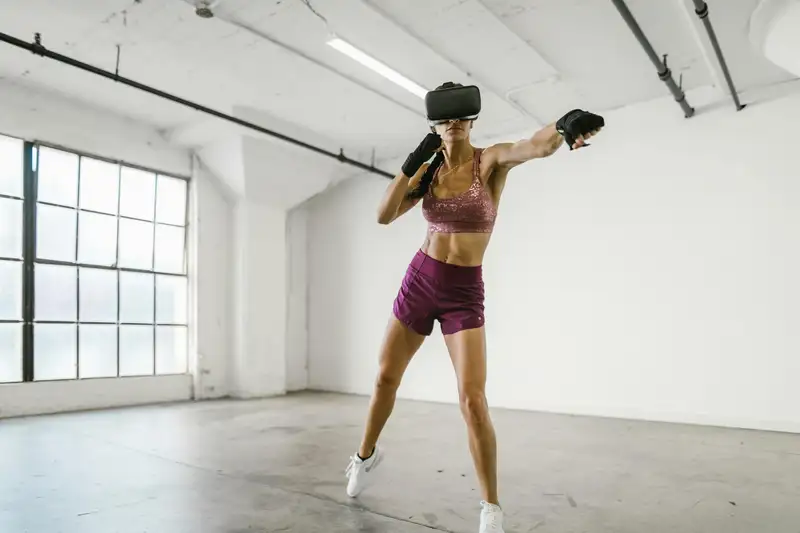The landscape of sports is undergoing a remarkable transformation, driven by the integration of artificial intelligence (AI) and computer vision technology. As the saying goes, “data is the new oil,” and this has never been truer in the realm of athletics. These advancements are reshaping how athletes prepare, how teams operate, and how fans interact with their favorite sports. Over the last five years, the influence of these technologies has been profound, enhancing efficiency and speed, although some critics argue that this shift may lead to a more mechanical style of play, diminishing the creativity of athletes.
A comprehensive study conducted by The Sports Journal in partnership with the sports AI firm Sponsorlytix examined the effects of AI and computer vision across five major sports: Premier League Football, NFL, UFC, NBA, and MLB. This analysis, covering the years from 2019 to 2023, focused on four critical areas: performance metrics, injury prevention, fan engagement, and officiating accuracy.
Enhancements in Performance Metrics
In the realm of football, improvements in metrics such as passing accuracy and defensive positioning have been noted. The NFL has also experienced a boost in passing accuracy and scoring rates. In MMA, advancements in striking accuracy and grappling effectiveness have been observed, while the NBA has seen enhancements in shooting precision and defensive skills. Baseball has similarly benefited, with notable increases in batting accuracy and pitching velocity.
Technologies like GPS trackers and computer vision systems have played a crucial role in these advancements, providing detailed data on player movements and ball trajectories. This information is essential for evaluating shooting accuracy, passing precision, and overall fielding efficiency.
AI-Driven Gameplay and Tactical Insights
The advent of AI and computer vision has revolutionized how player tracking and event recognition are conducted. Utilizing advanced algorithms for biomechanical analysis, these technologies correlate player techniques with successful outcomes, allowing teams to refine their strategies and game plans. Additionally, AI-driven analytics facilitate the creation of personalized training programs by pinpointing individual player strengths and areas needing improvement.
In the realm of esports, computer vision technology is enhancing player performance analysis by capturing detailed biometric data and physical movements, which are vital for improving ergonomics and optimizing training routines.
Injury Prevention and Recovery
AI algorithms are increasingly utilized to analyze biomechanical data, significantly aiding in injury prevention and rehabilitation efforts. Wearable devices equipped with sensors monitor athletes’ movement patterns, providing real-time feedback to help reduce injury risks. AI-assisted rehabilitation programs have demonstrated a 20% faster recovery rate compared to traditional rehabilitation methods.
However, the analysis of injury data presents mixed results across different sports. While the NFL has reported a notable decrease in injuries, the Premier League has seen an uptick, indicating varying levels of effectiveness of AI and computer vision technologies in mitigating injuries.
Transforming TV Broadcasts
The incorporation of AI and computer vision into television broadcasts has steadily increased. In the Premier League, the use of these technologies rose from 13% in 2019 to 35% in 2023. Similar trends are evident in the NFL and UFC, enhancing the viewing experience through data-driven insights and augmented visuals.
By harnessing AI, broadcasters can provide enhanced visualizations, including real-time data analysis and augmented reality graphics, which enrich viewers’ understanding of the game and foster deeper engagement.
Impact of VAR in Football
One of the most significant applications of computer vision is in officiating, particularly with the implementation of Video Assistant Referee (VAR) technology in football. VAR employs multiple camera angles and AI algorithms to assist referees in making critical decisions, resulting in a remarkable 98% accuracy rate in officiating decisions.
Revolutionizing Sponsorship Measurement
Computer vision technology has also transformed how sponsorships are measured, enabling precise visual recognition and logo tracking. This capability allows sponsors to assess the visibility of their branding during games, providing valuable insights for optimizing sponsorship strategies.
The Premier League has experienced a steady increase in sponsorship revenue, rising from $0.88 billion in 2019 to $1.18 billion in 2023, highlighting the financial impact of AI and computer vision in the sports industry.
In conclusion, the integration of AI and computer vision technologies is propelling the sports industry into a new era, enhancing performance analysis, injury prevention, and fan engagement. While there are concerns about athletes becoming more “robotic,” the widespread adoption of these technologies across various sports leagues underscores their transformative potential in refining training methodologies and optimizing game strategies.
